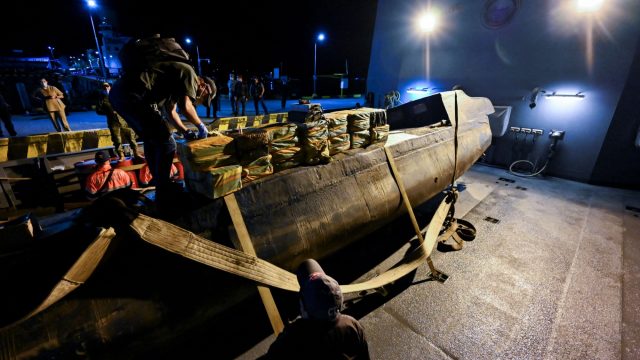
The illegal distribution of cocaine has surged globally in recent years, astonishing law enforcement officials, as smugglers become more adept at spreading the drug worldwide. In addition to a historic peak of cocaine supply, so-called “narco subs” have proliferated as an effective means of disseminating cocaine.
What are ‘narco subs’?
A narco submarine, sometimes known as a drug sub or narco sub, is a customized self-propelled semi-submersible or fully-submersible built and used by drug smugglers. The submarines are a way to elude law enforcement, as smugglers move large quantities of narcotics around the world. Narco subs have been operating in the Pacific Ocean for decades, but they have recently “been found on new routes to Europe and Australia.” Their “designs have also become more advanced,” said The Wall Street Journal.
Though “most commonly seen off the coast of Colombia,” narco subs have been “spotted across the globe in recent months,” said CBS News. In January, a sub was found broken in two and towed by a fishing boat into a port in northwestern Spain. Last November, the Mexican Navy said it seized nearly 8,000 pounds of cocaine aboard a narco sub approximately 150 miles off the coast of Acapulco.
“It’s like a cat and mouse,” Fernando Iglesias, the head of customs police in Galicia in Northern Spain, said to the Journal. Cartels are increasingly using underwater smuggling routes, and in only four years, they have “developed a better vessel with more capacity,” Iglesias said, noting how more cocaine was found on a recently captured narco sub compared with the first one found in Europe in 2019. “They’re specializing and we need to specialize also in detection.”
What is driving the global surge of cocaine?
Cocaine supply has reached a historic peak worldwide, according to U.S. and United Nations antidrug officials. Last fall, the U.N. estimated Colombia’s annual cocaine yield at 3,000 tons, about eight times the yield of 2012, when “interdiction efforts were at their peak,” said the Journal. The “loosening of antidrug enforcement in Colombia” combined with “expansive coca cultivation, supply chain improvements and strong consumer demand” have since “pushed the cocaine trade to new highs.” To boost that supply chain, organized crime groups are developing “cocaine navies” that utilize narco subs to “ferry larger hauls over greater distances.”
The boost in supply is why “traffickers take more risk, why you start seeing bigger seizures — eight tons, nine tons,” Matt Donahue, former head of global operations at the Drug Enforcement Administration, said to the Journal. “Losing drugs doesn’t even matter to them anymore because they’ve got so much.”
Cocaine’s “global rebound” is a challenge to the Trump administration’s efforts to keep illicit drugs from arriving in the U.S. from Latin America. “We look at the cocaine threat to the United States and our global partners, and it’s been increasing,” Derek Maltz, the acting DEA director, said to the Journal.
The issue is also a mounting concern elsewhere. There is “diversification in global cocaine consumption, which is extremely significant,” said Leonardo Correa, who oversees research on Colombia’s cocaine trade for the U.N. There is potential for expansion, and “we don’t know how much it will grow.”
What used to be a “one-boat operation risking a run through the Caribbean” has evolved into a “far more globalized network — with many more players, including seasoned smugglers and captains from illegal fishing fleets,” said Capt. González of the Colombian navy’s research team to the Journal. The latest narco subs are “impressive, even to those who hunt them,” the Journal said. “You never stop being astonished,” González said. “As long as there are very good earnings, they can invent anything.”
Drug smugglers are increasingly relying on underwater travel to hide from law enforcement






